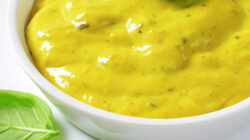Umami in the News
Umami – it’s been around for ages yet it still continues to be talked about. We thought it would be fun to provide a mid-year roundup on what’s happening in the industry—since it is our passion and all. So we did a little digging and came up with some articles of interest that we thought we’d share. So go ahead, throw out a few of these Umami tidbits and we dare you not to get hungry.
Fermentation + Umami= New Fusion As if umami couldn’t get any better, up and coming chefs are experimenting every day to make umami stronger and more flavor intense. Ali Bouzari, co-founder of Pilot R+D in Northern California, is using a Japanese style of fermentation called misozuke, pickling in miso. Bouzari pickles garlic and shallots using the miso to add the umami. And in another experiment of umami boldness, he uses a base of Japanese nuka (fermented rice bran) to which salt and water are added along with vegetables to be pickled. From there, he adds cultured butter to the fermented vegetable nuka to create a luscious, savory sauce he calls “Nuka Beurre Blanc.” It is the fermentation of vegetables in the rice bran, which elevated the umami of “nuka” to big levels of wow. We are excited to see where this umami level creativity goes but we know it’s going to taste beyond great. Read the article here.
Does Umami differ between the U.S and Japan? Apparently so. Case in point: the New Yorker’s recent article highlighting Umami Burger’s founder Adam Fleischman discussing the difference between American and Japanese translations of Umami. Fleischman’s American approach of “more is better “ to Umami contrasts with the Japanese holistic view of umami’s effect on living a better life. Each of Fleischman’s menu items contains power-packed umami (like the Original Umami Burger with parmesan frico, shiitake mushroom, roasted tomato, caramelized onion and Umami house ketchup – yum!). Check it out…really good stuff.
Finally, over at NPR was the discussion on adding umami to vegetarian dishes, which is interesting in and of itself, as umami is typically described as “meaty.” The idea of adding umami-containing ingredients to vegetarian dishes like vindaloo or a unusual mushroom Bolognese adds a meaty component that creates that characteristic mouthwatering effect in an almost stealth-like way. While the mushrooms in the Bolognese contain umami, it’s the soy sauce that can’t be seen that adds the “pop.” And that is something we can get behind.
Umami at a Spot Near You
- Panera – Soba Noodle Bowl with Chicken. Chicken raised without antibiotics, soba buckwheat noodles, fresh spinach, Napa cabbage blend, roasted mushroom and onion blend, sesame seeds and cilantro in an umami soy-miso broth.
- Philadelphia based Sweetgreen has a new Umami Grain Bowl with wild rice, quinoa, farro, roasted mushrooms, red onion, tofu, Swiss chard, pea shoots, spicy sunflower seeds and a miso sesame ginger dressing.
Umami is still the darling of the culinary world, which is amazing given that it’s over 100 years old. Consumers are still discovering it, researchers are still studying it and we frankly don’t envision a time or a plate without it. For an easy way to incorporate umami, click here.


